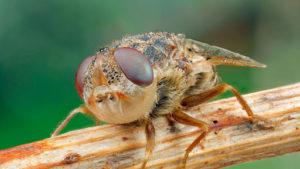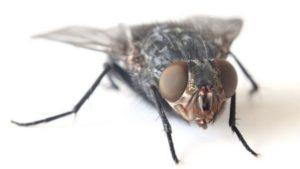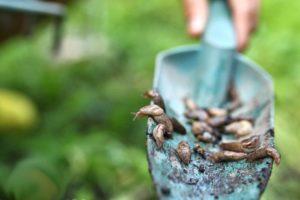Pests of the garden, garden and home: small insects - big harm
Every gardener, gardener and lover of green plants dreams that the plants he takes care of will please with their appearance and delicious fruits or vegetables. But there are pests that can interfere with this.
Content
Who are the pests
According to Wikipedia, a pest is an animal that harms a person, his health, crop quantity or quality. Moreover, the damage can be completely different, such as damaged products or economic damage.
There are different types of pests that feed in one way or another and have their own particular preferences.
Pests can be of several types. This:
- mammals;
- insects;
- arachnids;
- slippery;
- pincers;
- birds.
To make it easier to figure out who belongs to what type, they are conditionally divided into several subtypes.
- Predatory animals that can harm people, pets or livestock.
- agricultural pests. The garden and vegetable garden are affected.
- Brownies and barn pests that spoil products and stocks.
- Parasites that exist at the expense of other animals, partially or completely living on them.
Agricultural pests
The most common agricultural pests are insects. They, in turn, are divided into several groups.
Tree pests:
- leaf beetles;
- sawflies;
- barbels;
- silkworms;
- bark beetles.
Species categories
Five main categories of pest species have been genetically identified.
These are 24 thousand different roundworms. Among them are parasites and free-living individuals. They parasitize on plants in the open field and in the greenhouse. Due to damage to the root system, plants slow down their growth and development, and are affected by fungal diseases.
Animals of small sizes that can eat both plant food and warm-blooded blood. Among plants there are external parasites that spoil the view and drink juices (spider webs) and internal parasites that live in the kidneys and under the bark (galls).
A huge class of representatives who have one thing in common - the body is covered with dense chitin. They may have a chewing or sucking type of mouthparts, allowing them to feed on a variety of food types. They are heterosexual, live all over the globe and their life cycle consists of several stages.
These are soft-bodied invertebrates with or without a shell. The most harmful are gastropods that live on earth. They move smoothly along the substrate and plants, attacking young plants in greenhouses, greenhouses and greenhouses.
Various mammals that harm vegetable gardens and orchards. Due to the specific structure of the incisors, they need to be ground down, so the pests constantly chew. They multiply and develop rapidly, eat a lot, grow to large sizes. They often carry diseases and ticks.
Herbivorous plants and their specialization
Pests feed on cultivated and wild plants. But they have their own food preferences. There are three types in total:
- Oligophages. They feed on plants of the same species and related ones.
- Monophages. Only one kind of food is preferred.
- Polyphages. Those that feed on completely different groups and types of plants.
They also include a classification on the fact of nutrition with organs and parts of the plant:
- damaging roots;
- root zone pests;
- eating leaves;
- insects on needles;
- stem pests;
- generative organs.
Pest groups
There are 14 main groups of pests, which include almost all insects. In the proposed material, some harmful animals that exist and are common on the territory of the Russian Federation and its environs.
Separately, it is worth noting quarantine pests. These are separate species that exist only in certain areas. Under the right conditions, they expand their range.
Household insects and mites
These are pests that live directly near a person, in the house, cellar and bathroom. They do a lot of damage:
- harm health;
- bite animals;
- spoil stocks;
- damage furniture and home.
animal pests
This group includes parasites that enter the body of the animal themselves or are carriers of diseases. Contact with representatives of this group in animals often penetrates, but infection does not always occur. Factors that play a key role include:
- kind of animal;
- his age;
- type of parasite
- pest numbers;
- body resistance;
- host-parasite relationship.
People pests
This group includes insects and animals that parasitize and carry diseases. This species is very large and includes several groups:
- On the human body. These are all kinds of lice, ticks and pedicles. They live permanently on the human body.
- housemates. This includes fleas and bedbugs. They feed on warm-blooded animals, can change hosts, and live nearby, but not directly on the host.
- associated with the village. A huge group of insects that cohabitate with people in private homes, towns and villages. These are flies, mosquitoes, mosquitoes.
- From the external environment. These are the so-called "gnats", insects that attack people and animals in the open air. In this category: flies, midges, ticks, mosquitoes, horseflies.
Examples of pests by food type
Consider, for example, several groups of insects by type of food.
Pest Control Methods
Special methods are selected only after the type of insect is determined. But there are some common methods.
- Agrothenic. Techniques that will help increase the productivity of plants.
- Immunological. Planting varieties resistant to diseases and pests.
- Biological. The use of pathogenic microorganisms and predators.
- chemical. These are pesticides and toxic substances that destroy insects.
- Biotechnical. Ways to reduce or completely stop the reproductive abilities of the pest.
- Mechanical. Methods of collecting and catching, with the help of small mechanisms and hands.
Preventive measures
It is easier to protect yourself, your home and household from the penetration of unwanted guests than to get rid of them later. There are a number of simple preventive measures.
- Maintenance of cleanliness in the house and on the site. This includes cleaning the site from weeds, housing from debris and sources of danger.
- Security measures. When leaving for nature, it is necessary to use protective equipment, in the garden and in the garden as well.
- Home preparation. To prevent insects from entering the house, you need to close the cracks, provide ventilation and garbage collection.
- Site security. Proper neighborhood, garbage collection, keeping compost pits in order will prevent the appearance of insects.
- Prevention. If timely spraying in the garden, whitewashing, cleaning and pruning is carried out, it will simply reduce the population.
Conclusion
Harmful insects are part of nature and constant neighbors of people. But they are harmful if the population is not controlled. It is necessary to monitor their number and degree of penetration into people's lives and try to coexist with them as little as possible, protecting your home and site.
Previous


